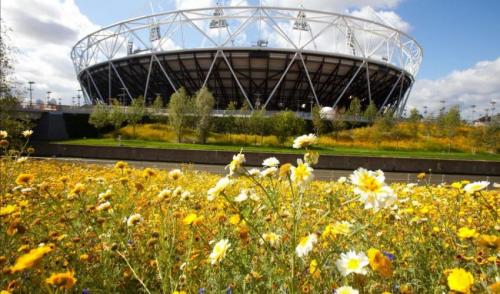IUCN guide to help new sports venues minimise impact on nature
A guide designed to help integrate biodiversity considerations into new sports venues, minimising their impacts on nature and delivering conservation benefits, was released today by IUCN, International Union for Conservation of Nature, at the United Nations Environment Assembly, in partnership with the International Olympic Committee (IOC).

A healthy environment is essential for the long-term viability of the sporting industry, as well as for the athletes and communities who invest in it,” says IUCN Director General Inger Andersen, the incoming Executive Director of UN Environment. “It is in everyone’s interest to ensure new sports facilities minimise their impacts on biodiversity and safeguard healthy outdoor areas for future generations.”
The guide, the second in a series supported by the IOC, confirms that poorly-designed sports venues that alter landscapes, disturb wildlife and increase pollution often have long-lasting impacts on the environment. However, it finds that with careful screening and attention to the location and design, new facilities and temporary infrastructures built for sporting events can either avoid or minimise impacts on nature and, in some cases, contribute to conservation.
“We are proud to have partnered with IUCN to help the sports sector contribute to the conservation of the natural world, on which it so strongly depends,” said the IOC Director General Christophe De Kepper. “This guide is the first of its kind to provide detailed advice on how to consider nature in all stages of the development of sports venues. It will help all those involved in venue development understand the potential impacts they can have on nature, and ensure that sporting events leave a lasting, positive legacy for local people and environment.”
The guide highlights several case studies, for example:
•During the planning phase for the Sydney 2000 Olympic Park, a colony of the threatened Green and Golden Bell Frog was discovered within the proposed location of the Olympic tennis venue. The venue was therefore moved elsewhere within the Olympic Park, where there were no ecological constraints. By the start of the Games, more than AUD 1 million had been spent to protect the frog, including the construction of a suitable habitat for the species.
•The development of London Olympic Park for the Olympic and Paralympic Games 2012 was designed to support the regeneration of a key part of east London, while improving the ecological integrity of the lower stretches of the Lea Valley. As part of the biodiversity action plan of the project, innovative solutions were developed to create natural habitats for bird and bat species on bridges within the Park.
•In Portugal, the development of the West Cliffs Golf Course near Lisbon allowed a dormant native seed bank stored in the topsoil to thrive, establishing a mosaic of over 15 hectares of coastal low-scrub plant communities, and providing habitat for diverse, native species.
•In Cape Town, South Africa, Green Point urban park is now part of the legacy from the stadium built for the 2010 FIFA World Cup, and offers a wide range of recreation and cultural activities for visitors, along with a Biodiversity Garden showcasing the Cape’s native flora.
•The World Rowing Federation (FISA) worked with WWF to develop a policy that ensures activities under its control will not damage natural or mixed UNESCO Natural World Heritage Sites, areas recognised for their Outstanding Universal Value.
While the guide is aimed at the sports industry, it is also beneficial for a range of stakeholders involved in the construction and decommissioning of venues. It urges decision makers to integrate biodiversity considerations into every stage of development and to manage impacts using preventative measures, and where necessary, corrective action.
The IUCN guide was produced as part of a collaborative agreement between IUCN and the IOC. In addition to producing a series of guides, IUCN has provided input on the Candidature Process for the Olympic Games 2024, 2028 and 2026, and supported other tasks related to the IOC’s sustainability strategy.
Source: International Union for Conservation of Nature
- 299 reads
Human Rights
Ringing FOWPAL’s Peace Bell for the World:Nobel Peace Prize Laureates’ Visions and Actions

Protecting the World’s Cultural Diversity for a Sustainable Future

The Peace Bell Resonates at the 27th Eurasian Economic Summit

Declaration of World Day of the Power of Hope Endorsed by People in 158 Nations

Puppet Show I International Friendship Day 2020

